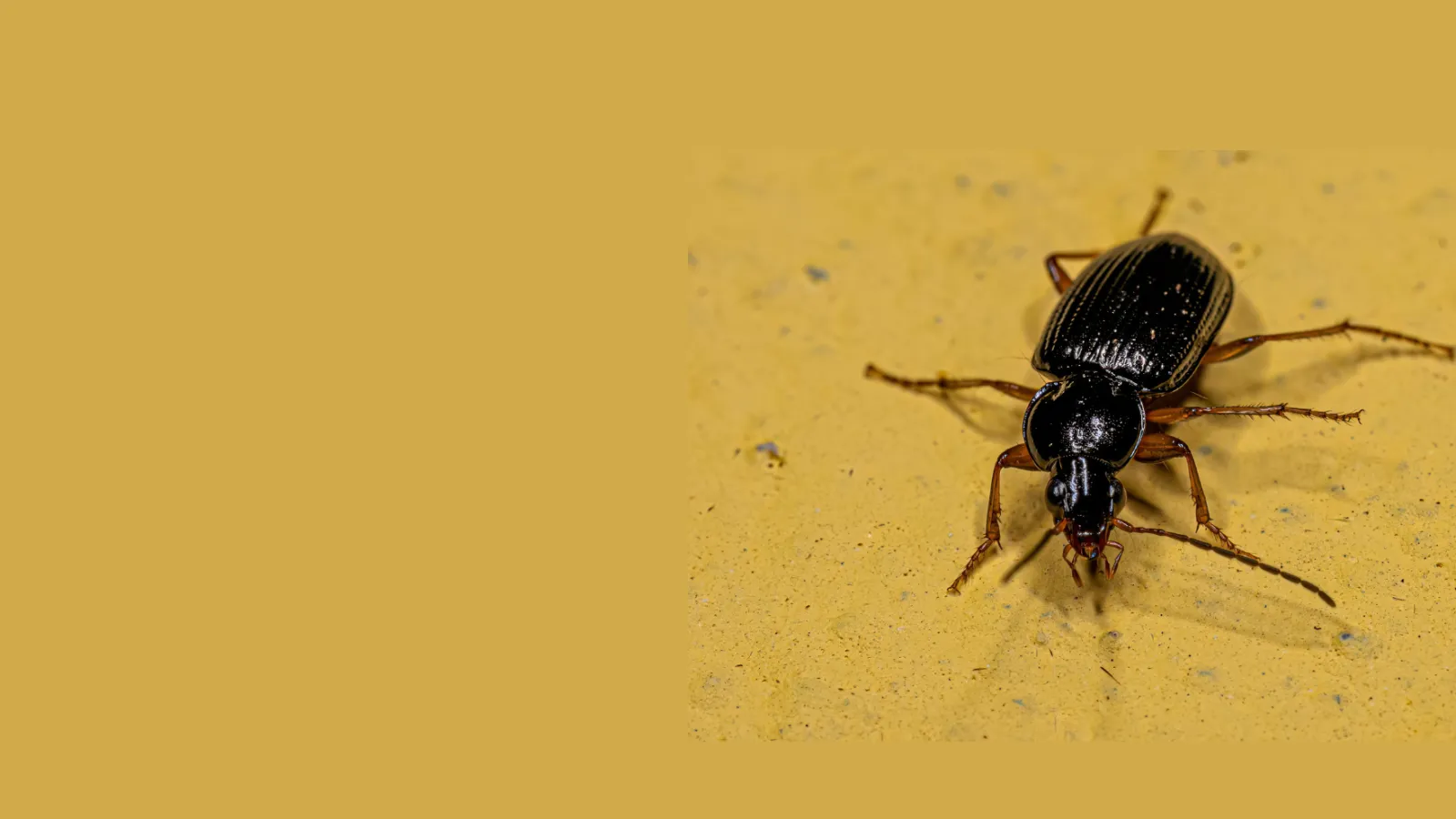
Ground Beetles
Latin Name: Calleida decora (Fabricius)
Ground beetles are a diverse family of beetles (Carabidae) with over 40,000 known species worldwide. These insects are commonly found outdoors in gardens, forests, fields, and under logs or stones. They are known for their beneficial role as natural pest controllers, preying on various insects and larvae.
Identification
- Size: Ground beetles vary in size but are typically between 1/8 to 1 inch long.
- Color: Most are dark-colored, often black or brown, with a shiny, hard exoskeleton.
- Shape: They have an elongated, oval body with long legs and prominent mandibles for hunting prey.
- Wings: While they possess wings, most ground beetles are not strong fliers and prefer to remain on the ground.
Habitat
Ground beetles are nocturnal and thrive in moist, sheltered environments. During the day, they hide under rocks, logs, mulch, or leaf litter. While they are primarily outdoor insects, they may occasionally wander indoors seeking shelter, especially during colder months.
Diet and Behavior
Ground beetles are predators that feed on a variety of pests, including:
- Caterpillars
- Slugs
- Snails
- Aphids
- Ants
Some species are omnivorous, feeding on plant material and seeds. Their predatory habits make them valuable allies in gardens and agricultural fields, helping to naturally control pest populations.
Life Cycle
- Eggs: Females lay eggs in soil or other concealed locations.
- Larvae: The larvae are also predatory, living underground and feeding on insects in the soil.
- Pupae: After several weeks, larvae pupate in the soil.
- Adults: Adult beetles emerge and continue their predatory behavior.
The lifecycle can vary based on the species and environmental conditions.
Potential Issues
While ground beetles are generally harmless to humans and beneficial in the garden, they can become a nuisance if they enter homes. They are not structural pests and do not pose any health risks, but their presence indoors can be alarming due to their size and movement.
Prevention and Control
- Outdoor maintenance: Reduce debris, such as woodpiles and leaf litter, around your property.
- Sealing entry points: Repair cracks, gaps, and openings in windows, doors, and foundations to prevent beetles from entering.
- Lighting adjustments: Ground beetles are attracted to light, so minimizing outdoor lighting near entry points can help.
- Indoor measures: If beetles enter, they can be removed using a vacuum or caught and released outside.
If infestations become overwhelming, contacting Mares is the best solution to ensure effective management.
